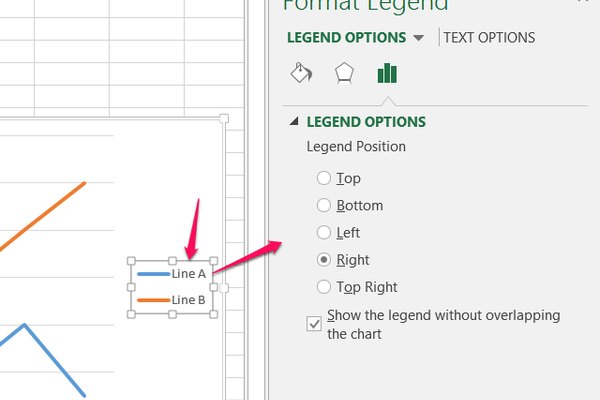How To Make A Line Graph In Excel 2011 For Mac
Second, this method requires behavior analysts to graph their data as scatterplots as opposed to the “marked line graphs” as described in the other tutorials already mentioned. Third, this method requires behavior analysts to insert two separate values for the x-axis and y-axis for each phase change line, which can be cumbersome. Fortunately, there is another way to add phase change lines directly into Microsoft Excel® graphs using combined graphs, gradients, and transparency options. Dec 02, 2015 The rundown: Can easily create a bar graph based on 2 variables in a given set of data, eg, age of participants and number of yrs playing sports. Assuming a sample of 25 people, the excel graph will have 25 bars, with age on the y-axis and playing time on the x-axis. Formatting the phase change line data series in Microsoft Excel® 2011 for Mac CHANGE the “Angle” to 0%. ADD or DELETE the gradient stops so that only three stops are shown. Learn how to use Excel for Mac 2011 to create different kinds of charts—from column, bar, and line charts to Gantt and exploded pie charts—and understand how to decide which type works best for your data. Double-click the title of the graph, then select the 'Chart Title' text and type in your graph's name. Clicking anywhere off of the graph's name box will save the text. You can do this for your graph's axes' labels as well.
Best photo edit apps for mac. The Mac is still the best device for serious photo editing, so you need some serious photo editing apps to make an impact. The built-in Photos app on Mac offers several useful photo editing tools. You can crop, adjust lighting and color, set the white balance, add filters, remove unwanted blemishes, and a few more things. There are more great image-editing tools than ever before, and they aren't limited to the desktop. We've curated a collection of the best Mac and iOS apps for tweaking, filtering, improving.
Learn how to use Excel for Mac 2011 to create different kinds of charts—from column, bar, and line charts to Gantt and exploded pie charts—and understand how to decide which type works best for your data. Plus, find out how to fine-tune your chart's color and style; add titles, labels, and legends; insert shapes, pictures, and text boxes; and pull data from multiple sources.
Author Dennis Taylor also introduces analytical tools that will help you make sense of your data and a few dynamic controls that allow you to adapt your charts on the fly. Along the way, he provides tips and tricks to be more productive and efficient. Instructor •.
Excel expert Dennis Taylor has 25+ years experience in spreadsheet authoring and training. Dennis Taylor has over 25 years of experience working with spreadsheet programs as an author, speaker, seminar leader, and facilitator.
Since the mid-90s, he has been the author/presenter of numerous Excel video and online courses and has traveled throughout the US and Canada presenting over 300 seminars and classes. He has authored or co-authored multiple books on spreadsheet software and has presented over 500 Excel webinars to a diversity of audiences. How much mac and cheese for 9*13 landmark. Dennis has worked with hundreds of different corporations and governmental agencies as well as colleges and universities. He lives in Boulder, Colorado.

How To Make A Line Graph
By: Dennis Taylor course • 4h 31m 16s • 1,413 viewers • Course Transcript - [Voiceover] Hi, I'm Dennis Taylor, and welcome to Excel for the Mac 2011: Charts in Depth. Creating charts is one of Excel's most powerful, yet easy to use features. In this course, we'll be looking at the concepts underlying charts, and the tools to implement those concepts. I'll show you how to create standard and useful charts, and then how to fine tune those charts with a variety of techniques. We'll see how to add greater impact to your charts with pictures and shapes, and then examine the most effective use of titles, labels, legends, axes, and grid lines.
How to Uninstall and Reinstall iTunes on Mac (macOS Sierra) Step 1. Go to the Applications folder and find the iTunes app. Right-click on iTunes and select Get Info. Locate and click on the padlock icon at the bottom right of the window, and you need to enter your admin password. How to reinstall itunes on windows 8.